About Phnom Penh
Phnom Penh (Khmer: ភ្នំពេញ, Phnum Pénh meaning 'Penh's Hill, Penh's Mountain') is the capital and most populous city of Cambodia. It has been the national capital since the French protectorate of Cambodia and has grown to become the nation's primate city and its economic, industrial, and cultural centre. Before Phnom Penh became capital city, Oudong was the capital of the country.
Phnom Penh (lit. "Penh's hill") takes its name from the present Wat Phnom (lit. "hill temple"), or from the ancient Funan Kingdom, which existed from the 1st to the 7th century AD in Southeast Asia and was the forerunner of the current Cambodian monarchy. Legend has it that in 1372, a wealthy widow named Penh found a Koki tree floating down the Tonlé Sap River after a storm. Inside the tree were four bronze Buddha statues and a stone statue of Vishnu. Penh ordered villagers to raise the height of the hill northeast of her house and used the Koki wood to build a temple on the hill to house the four Buddha statues, and a shrine for the Vishnu image slightly lower down. The temple became known as Wat Phnom Daun Penh, which is now known as Wat Phnom, a small hill 27 metres (89 ft) in height. Phnom Penh's former official name is Krong Chaktomuk Serei Mongkol (Khmer: ក្រុងចតុមុខសិរីមង្គល, lit. "city of Brahma's faces"), in its short form as Krong Chaktomuk (lit. "city of four faces"). Krong Chaktomuk is an abbreviation of the full name, given to it by King Ponhea Yat: Krong Chaktomuk Mongkol Sakal Kampuchea Thipadei Serei Theakreak Bavar Intabat Borei Roat Reach Seima Moha Nokor (Khmer: ក្រុងចតុមុខមង្គលសកលកម្ពុជាធិបតី សិរីធរបវរ ឥន្ទបត្តបុរី រដ្ឋរាជសីមាមហានគរ). This loosely translates as "the place of four rivers that gives the happiness and success of the Khmer Kingdom, the highest leader as well as impregnable city of the God Indra of the great kingdom".
Images of Phnom Penh
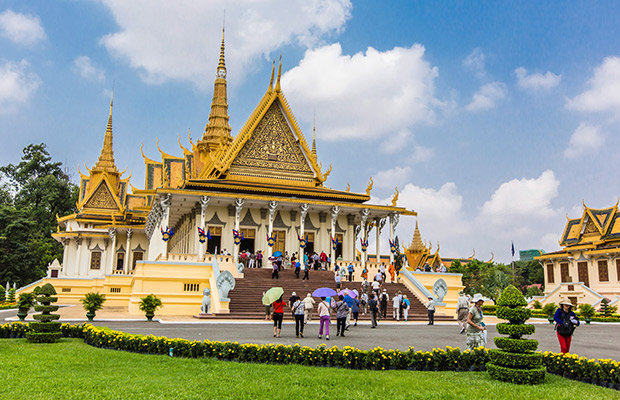
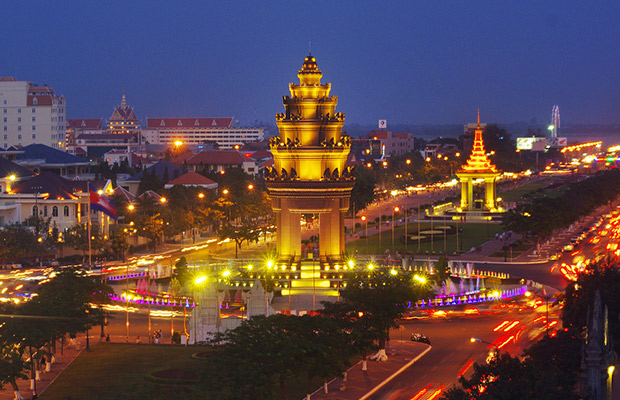
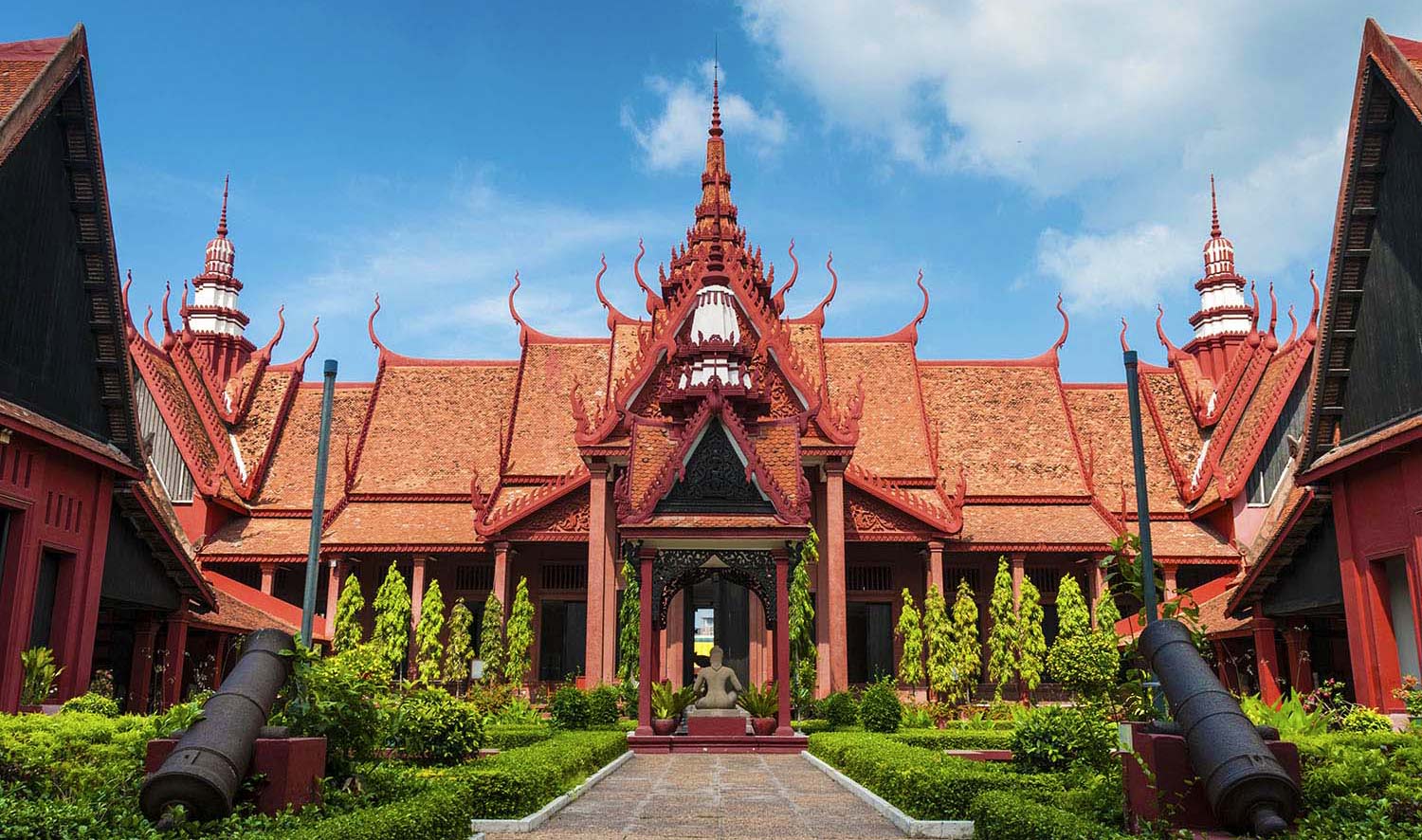
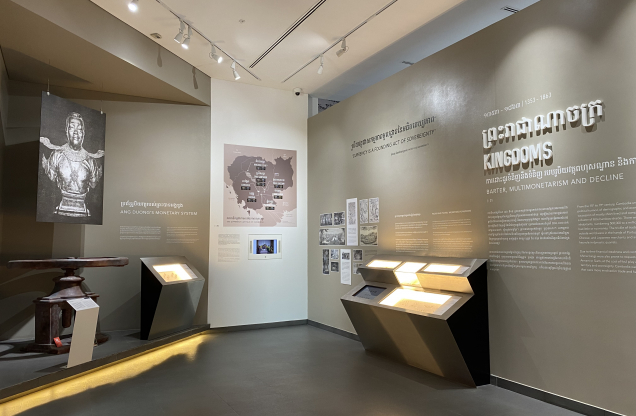
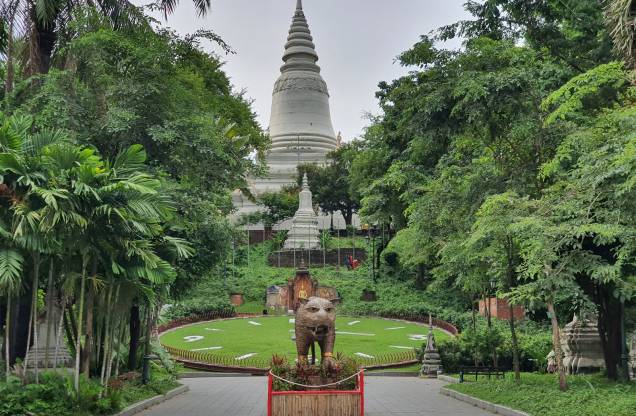
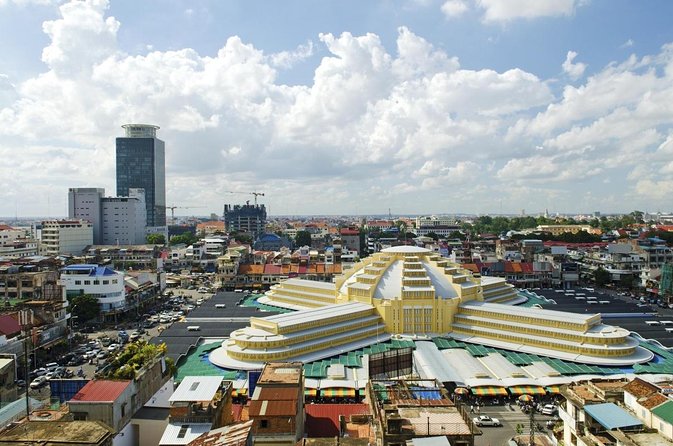
More Information
Phnom Penh is Cambodia's economic centre as it accounts for a large portion of the Cambodian economy. Double-digit economic growth rates in recent years have triggered an economic boom in Phnom Penh, with new hotels, restaurants, schools, bars, high rises and residential buildings springing up in the city.
The economy is based on commercial interests such as garments, trading, and small and medium enterprises. In the past few years the property business has been booming, with rapidly increasing real estate prices. Tourism is also a major contributor in the capital as more shopping and commercial centres open, making Phnom Penh one of the major tourist destinations in South East Asia along with Siem Reap and Sihanoukville. According to the World Travel and Tourism Council, tourism made up 19.2 percent (US$2,053 million) of Cambodia's GDP in 2009 and accounts for 13.7 percent of total employment. One of the most popular areas in Phnom Penh for tourists is Sisowath Quay, alongside the Tonle Sap River. Sisowath Quay is a five kilometre strip of road that includes restaurants, bars, and hotels.
The picturesque city of Phnom Penh was built around the Royal Palace and Preah Morakot Pagoda, the latter known for its floor of silver tiles and many treasures, including a golden Buddha statue. The Royal Palace compound included the Royal Palace (1919), the Royal Palace Museum, and the Veal Mien (Royal Plain), on which the national congress met twice a year. The National Museum displays Khmer art and historical documents. The European quarter, in the northern sector of the city, stood at the foot of the high Phnom Penh (Penh Hill), atop which was a pagoda housing the ashes of the legendary Lady Penh, whose discovery of a bronze Buddha there inspired the settlement bearing her name. Phnom Penh other educational institutions included the independent Buddhist University and institutes for Buddhist and Pāli studies. A world-renowned attraction was the Royal Ballet, until modern times restricted to performances before Cambodian royalty. Its authentically bejeweled dancing girls gave mimed versions of ancient Buddhist and Hindu legends. There was also a national theatre.